As I alluded to in the last post, I awoke at 1:30 AM, freezing cold and 1800m up. The reason for such discomfort was to try and see the legendary ‘blue fire’ of Ijen crater. One of Indonesia’s many active volcanoes, Ijen spews forth copious amounts of sulphur, both in gaseous and liquid form. Part of the gaseous emissions are flammable, and ignite on contact with oxygen in the atmosphere, creating unique bright blue flames.
One of the interesting things about Ijen is the sulphur miners – poor souls who brave the fire and stench to mine the freshly cooled sulphur, and haul vast amounts of it at a time back up the side of the crater and down the mountain, for a pittance – around 10 cents per kilo. On the short but demanding hike up to the edge of the crater (600m altitude gain in 3km), I had gotten talking to a Swiss couple, and one of the miners on his way to work. The three of us agreed to pay him to take us down into the crater itself and get up close and personal with the blue fire.
The fire itself is an eerie sight, half shrouded in the plumes of sulphur smoke – and almost impossible to photograph.
Easier to photograph is the sulphur that abounds, both in molten (dark orange) and solid (bright yellow) forms.
Dodging plumes of foul-smelling sulphur smoke as the wind changed, we got our last photos and prepared to clamber back up the side of the crater.
The miners are an incredibly hardy lot – for small blokes who must weight around 60kg, they haul these baskets of 90-100kg up a steep and slippery crater rim, then 3km down the mountain.
Note the strain on my face just from picking it up and balancing it – let alone actually carrying it any distance, horizontal or vertical!
Back up on the crater rim, we watched the dawn break over the hellish scene below.
Note the green colour of the lake – it’s basically hydrochloric acid, from the volcanic gasses, and was measured a few years ago at a pH of 0.5!
Back on the road, I descended through a dense jungle that thrived on the rich volcanic soil. True to tropical form, it began to rain, in the insistent way that you know means it’s going to continue for hours.
My stop for the night was the small town of Cemoro Lawang, at an altitude of 2200m, the closest town to the most famous volcano on Java – Mount Bromo.
Another morning, another early start – 3 AM this time, to hike up a nearby mountain and catch the dawn as it breaks across Mount Bromo.
As light crept over the landscape, it was possible to make out the huge caldera in which the volcano mouth was perched.
And the moneyshot of the three volcanoes – Mt Bromo is the smoking mound to the left, Mt Batok is in the right foreground, and Mt Semeru (the highest peak in Java) in the background. Also note the small Hindu temple, Poten, just in front of Bromo.
Walking back down from the sunrise viewpoint, the road wound through rural houses and fields.
Descending inside the caldera, you must first cross the ‘sea of sand’ to reach the base of Bromo itself – easy on an offroad bike.
Then I set about climbing my second volcano in as many days. There were horses available for the lazy, but even at 2200m I wanted to climb it myself.
A pause for photos halfway up, and a local shrine.
Then tackled the 242 stairs to the top.
Well worthwhile for the view, once my heartrate had returned to normal.
After two nights in a row of only a few hours sleep, combined with physical exertion at (relatively) high altitude, I was bone tired. I hit the road and pushed through to Yogyakarta, my next sightseeing stop.

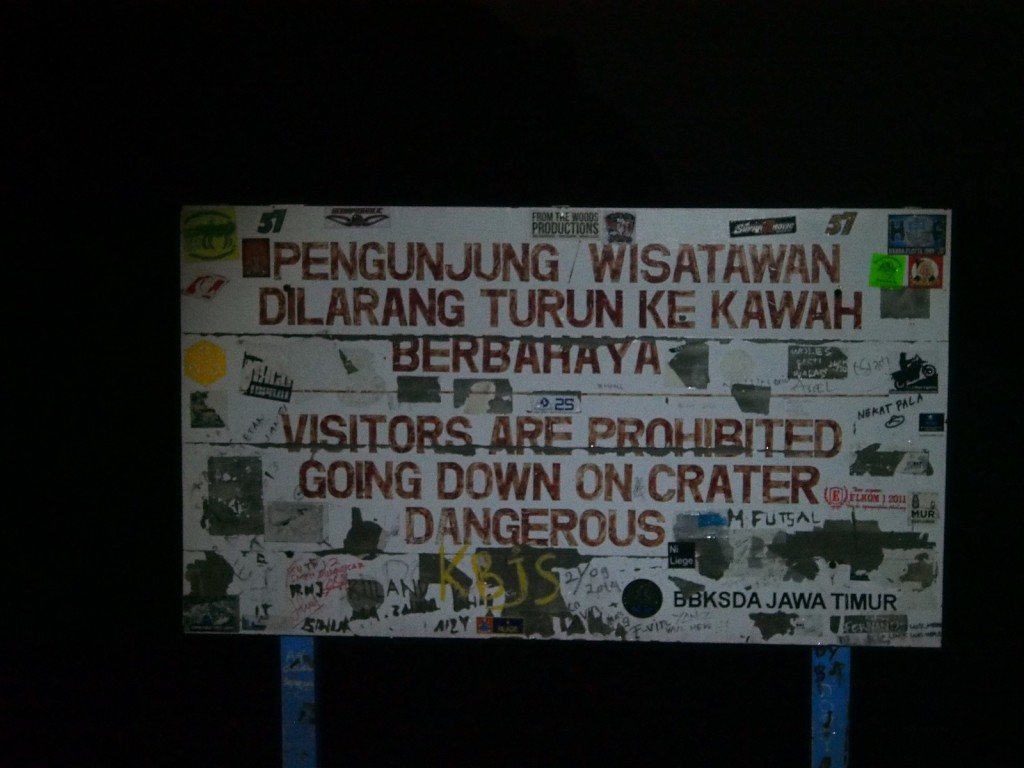

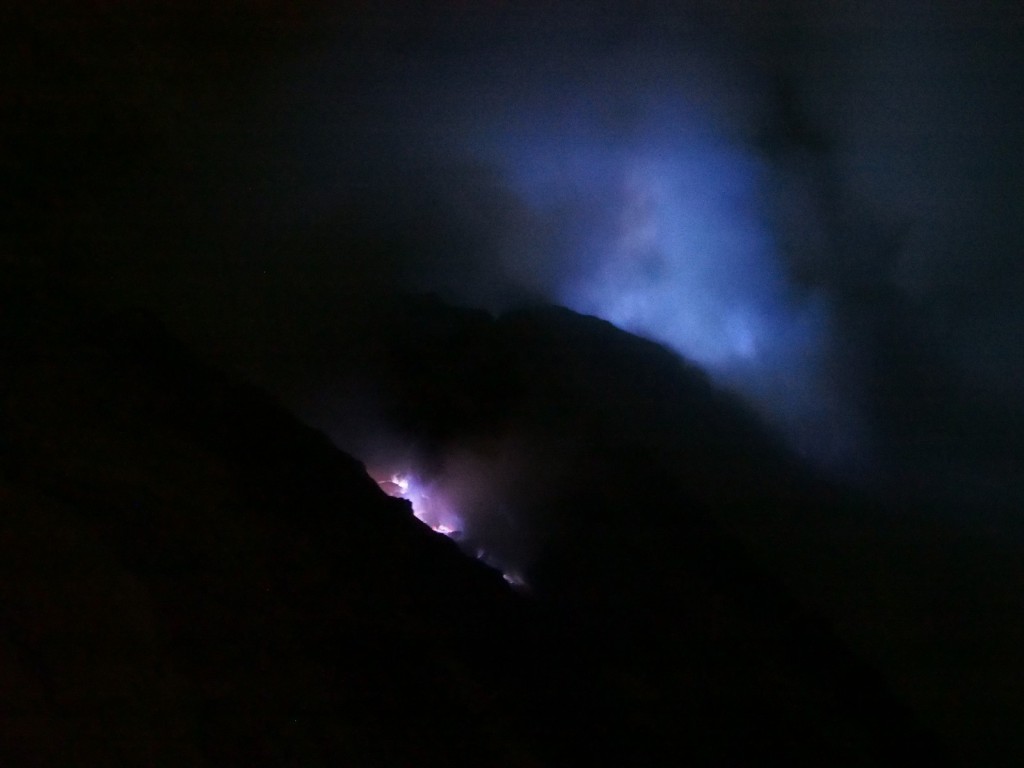
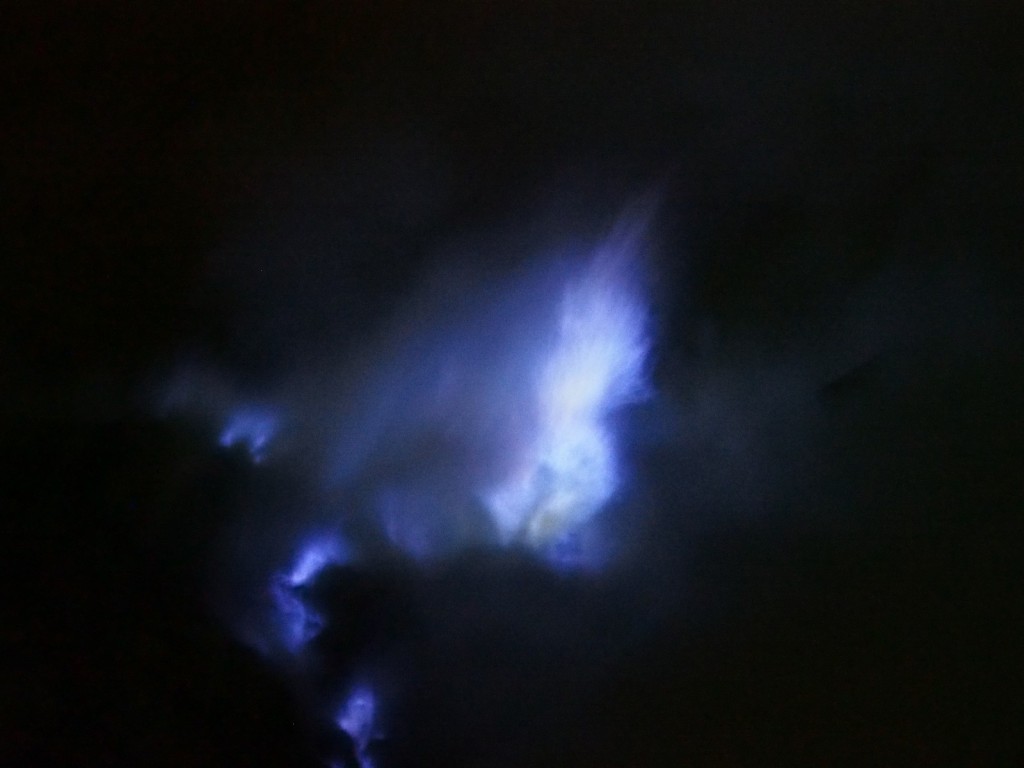
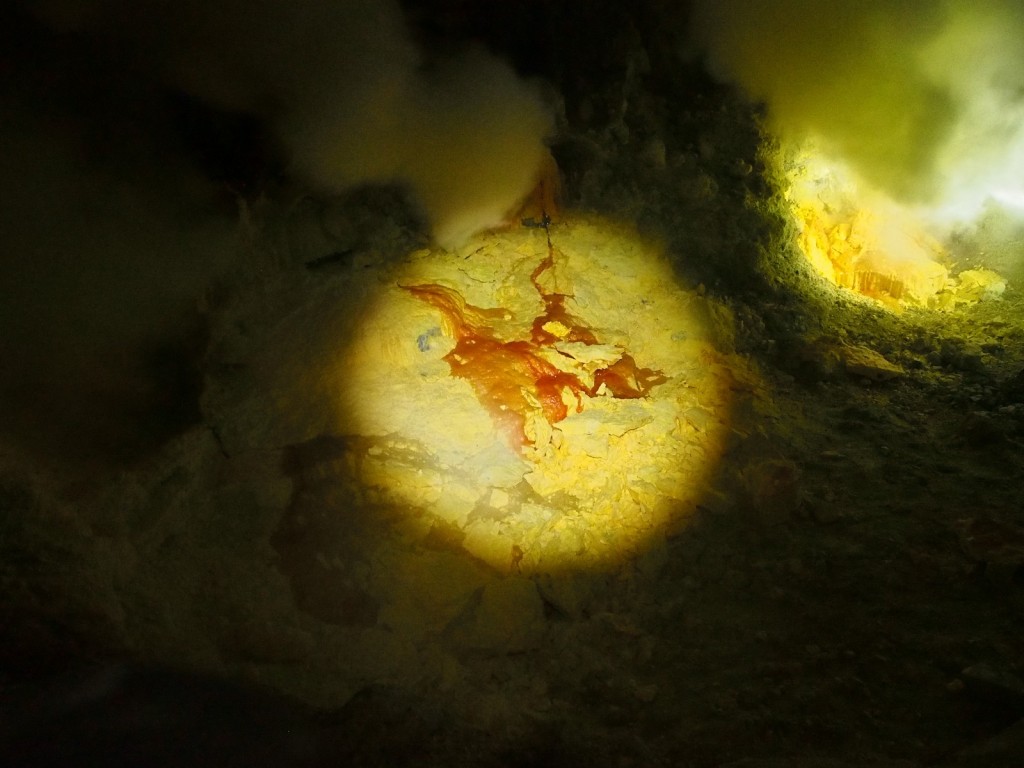
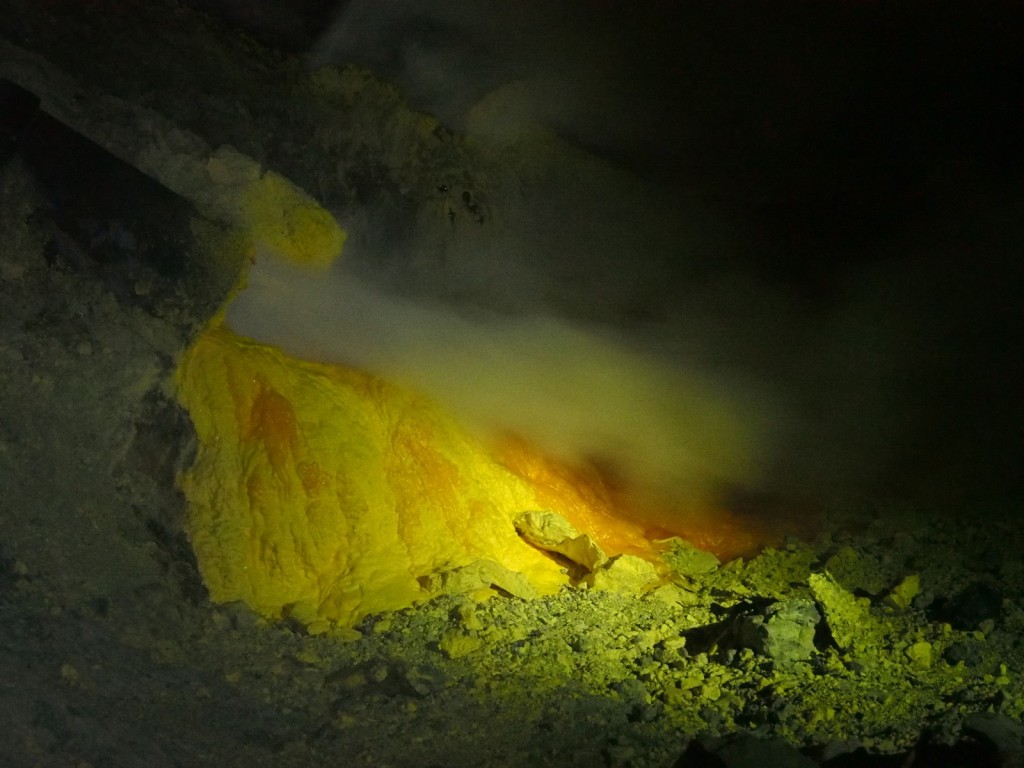
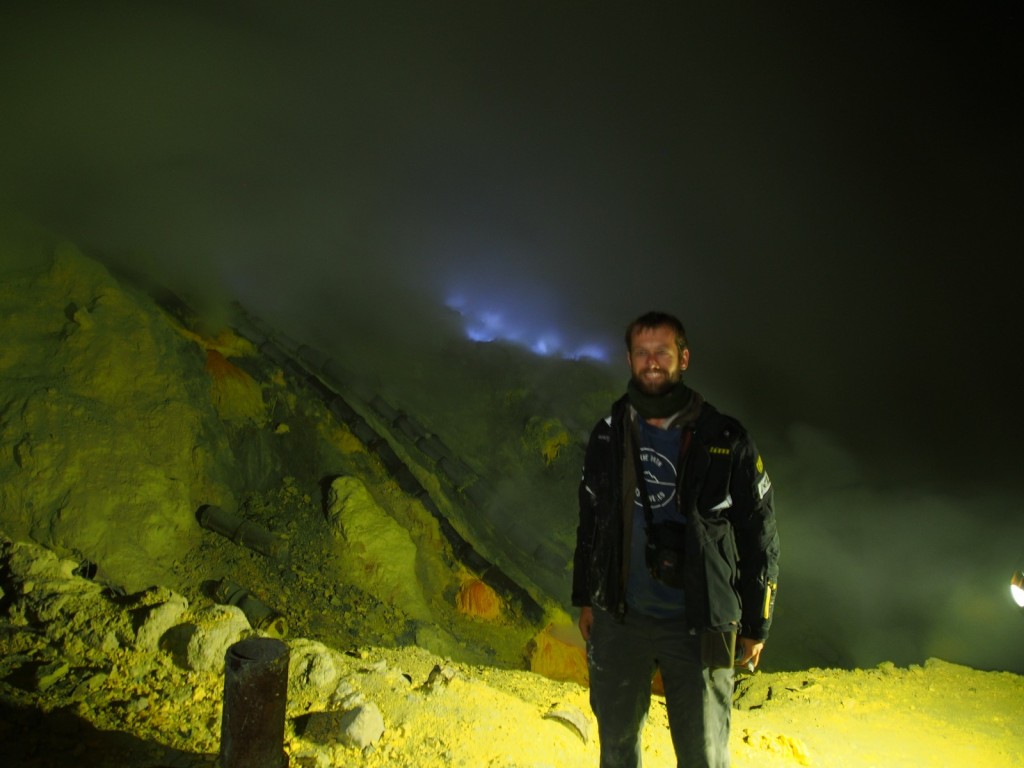
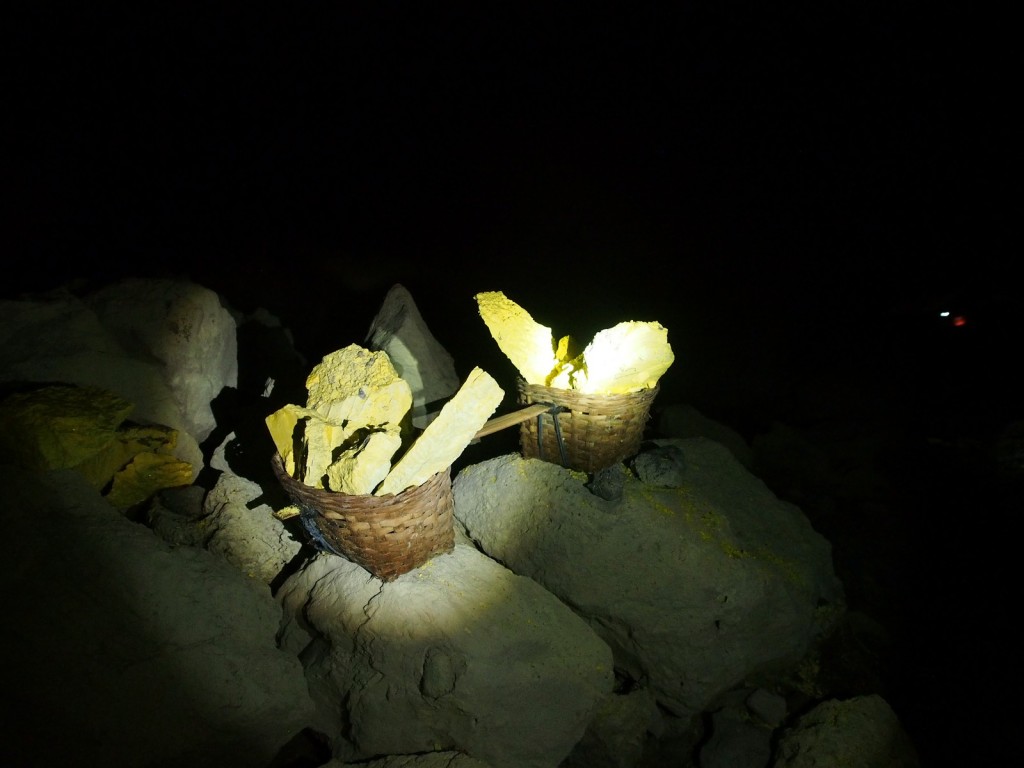
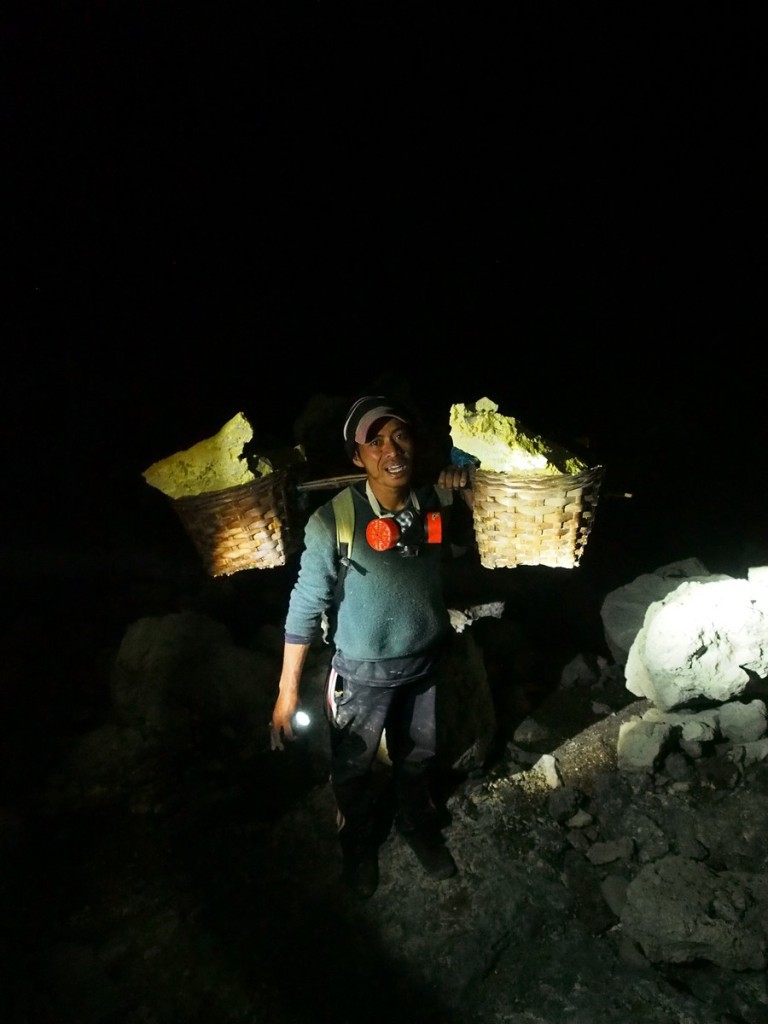

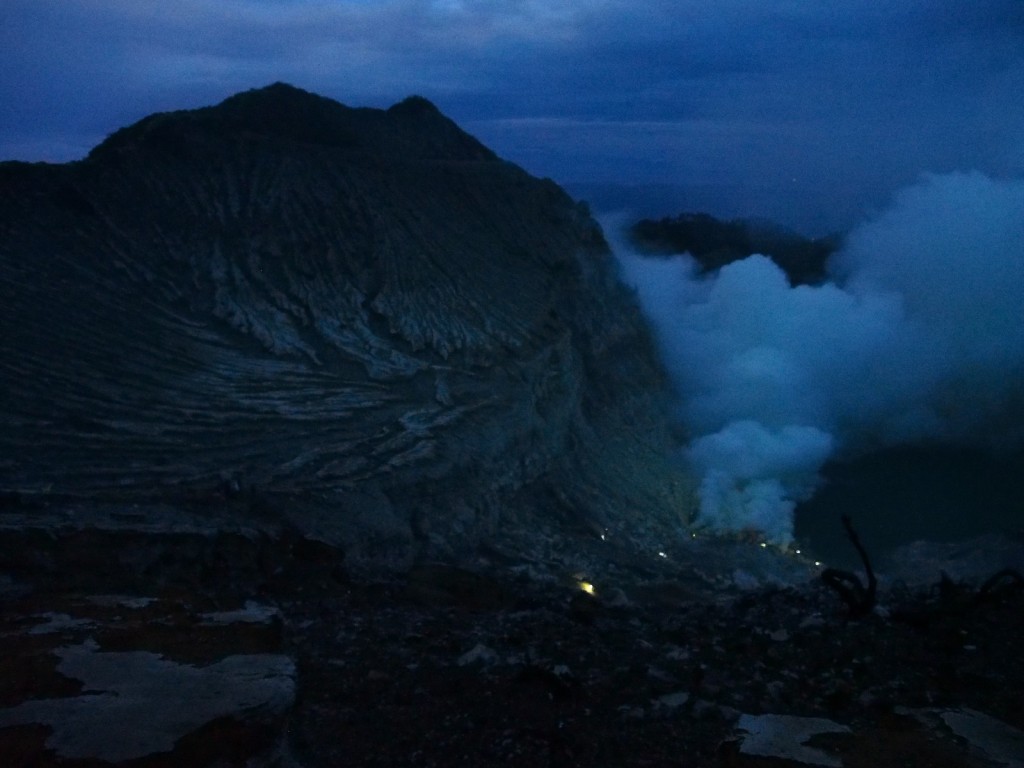
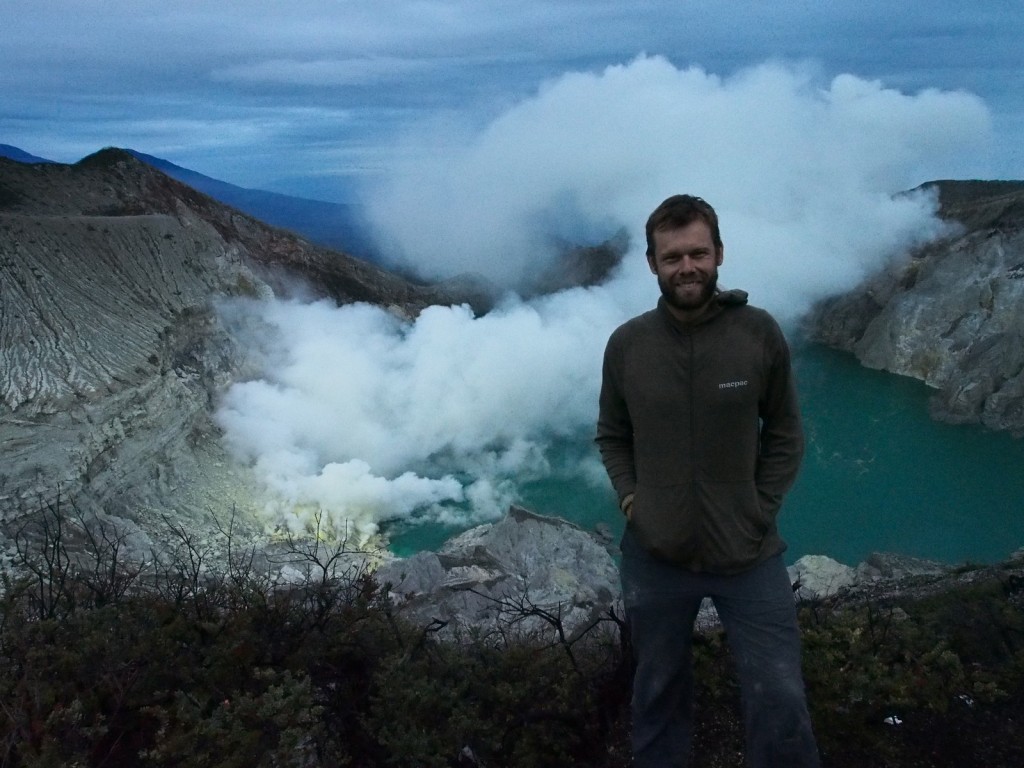
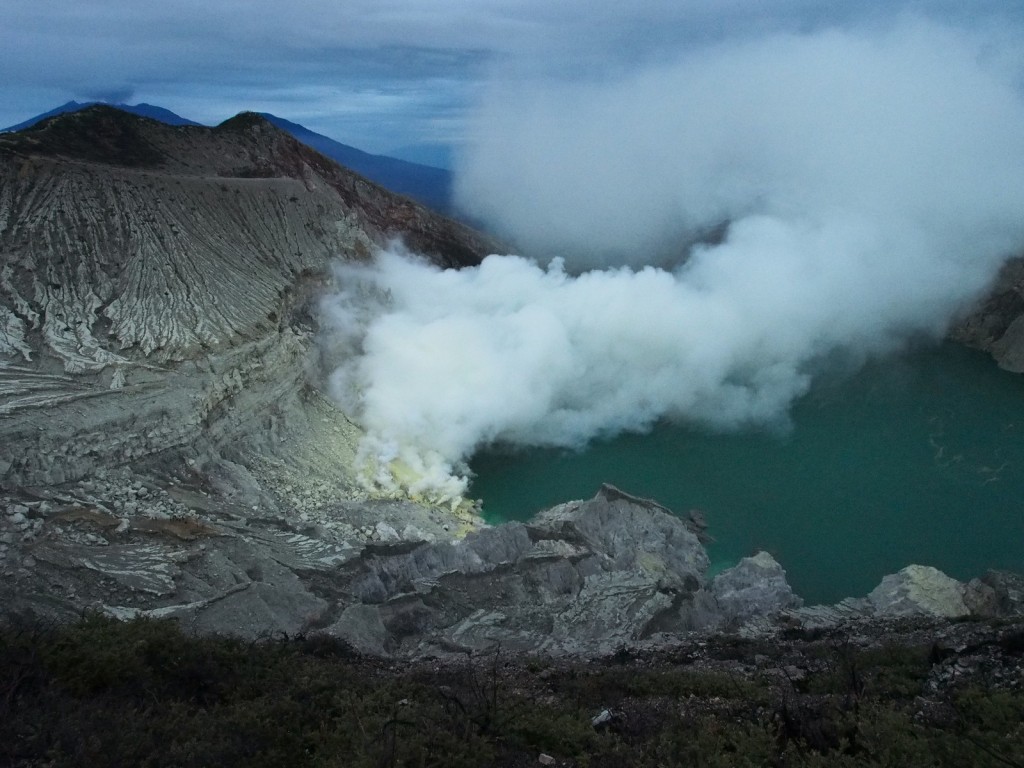
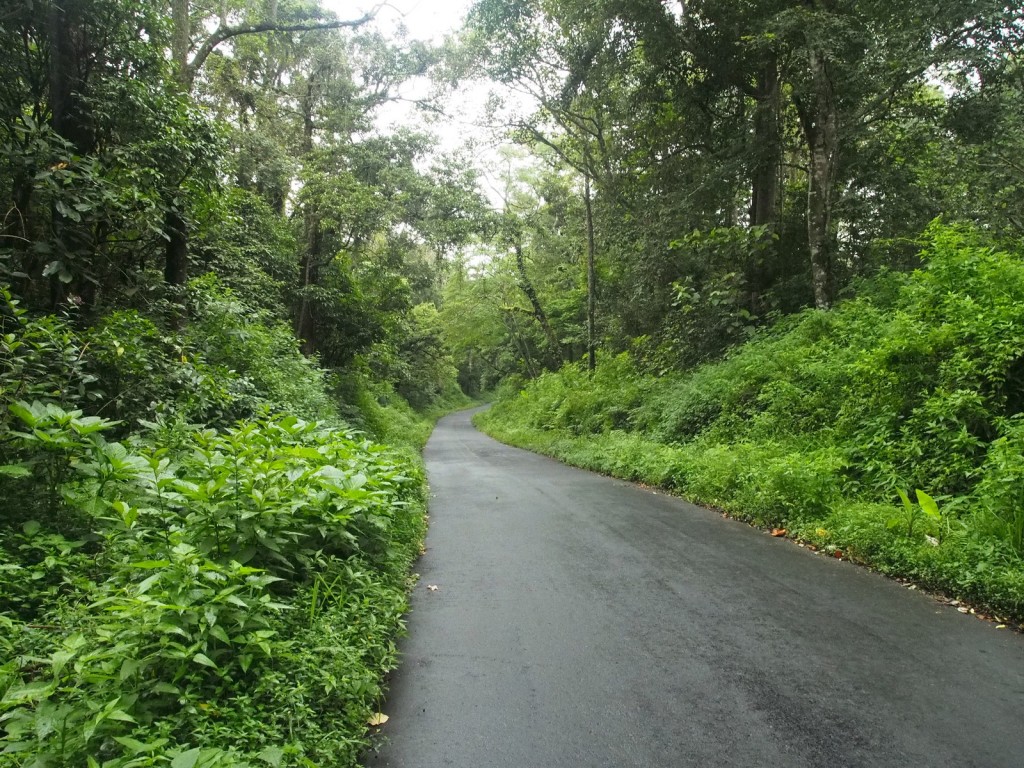
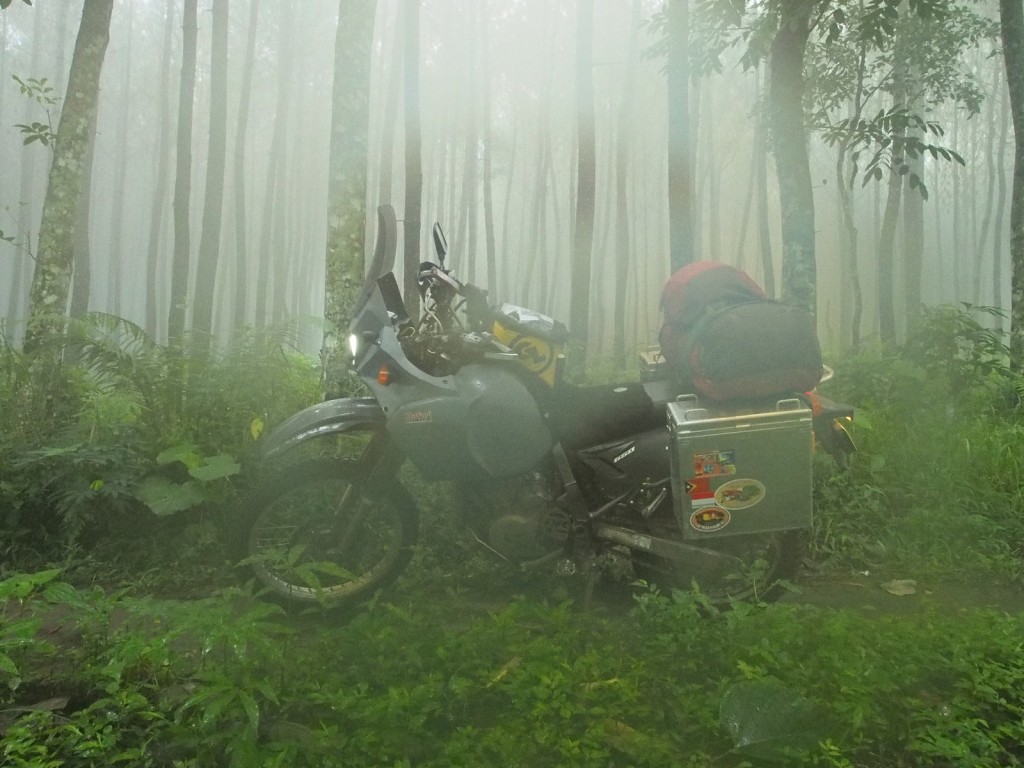

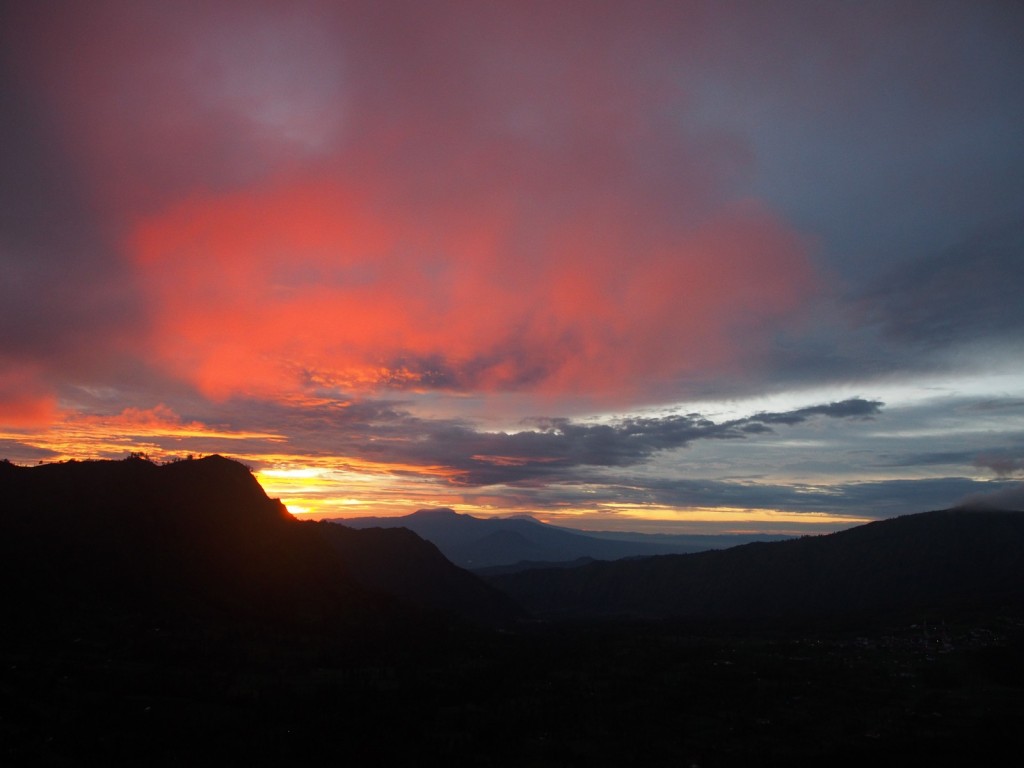

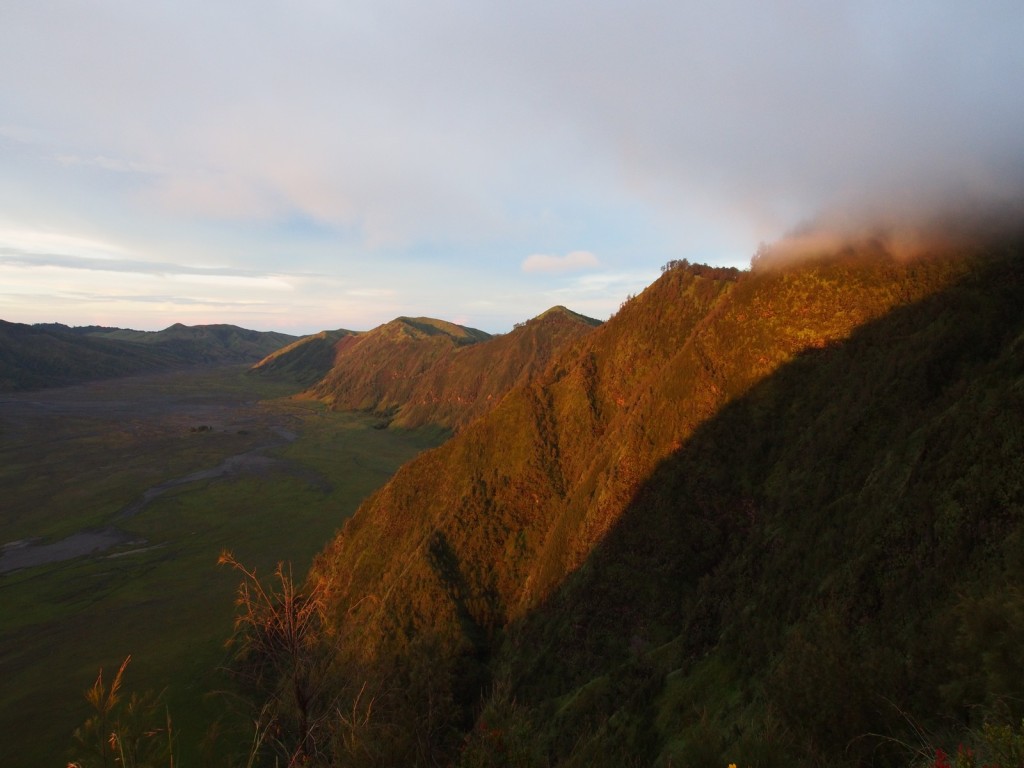
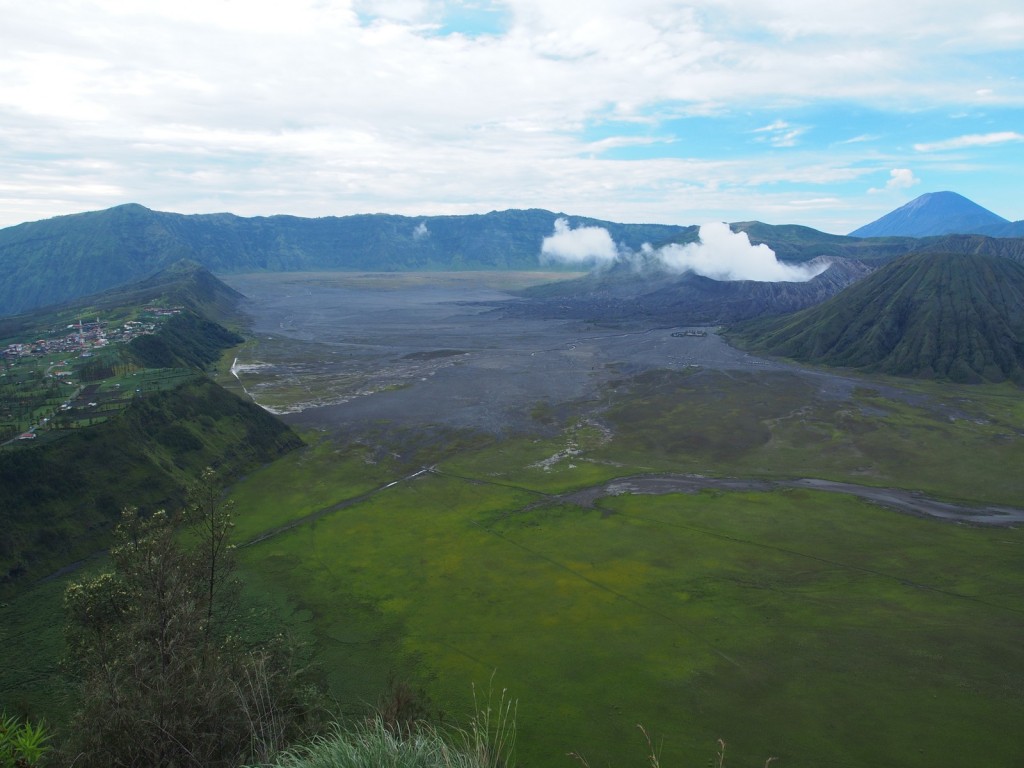

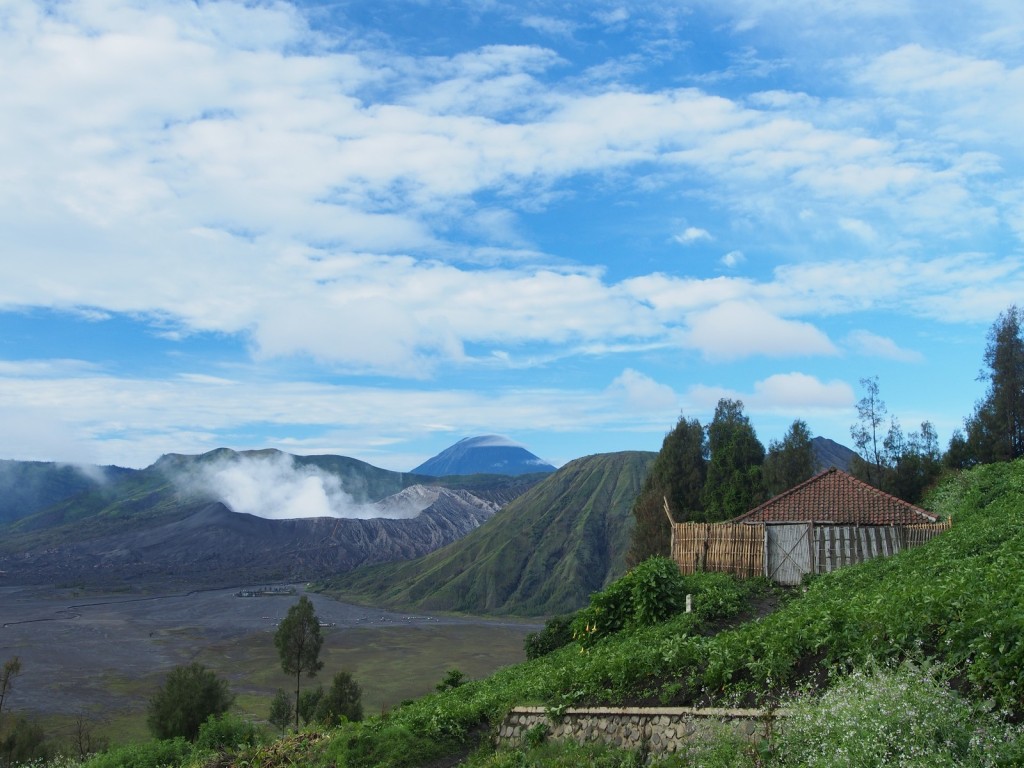
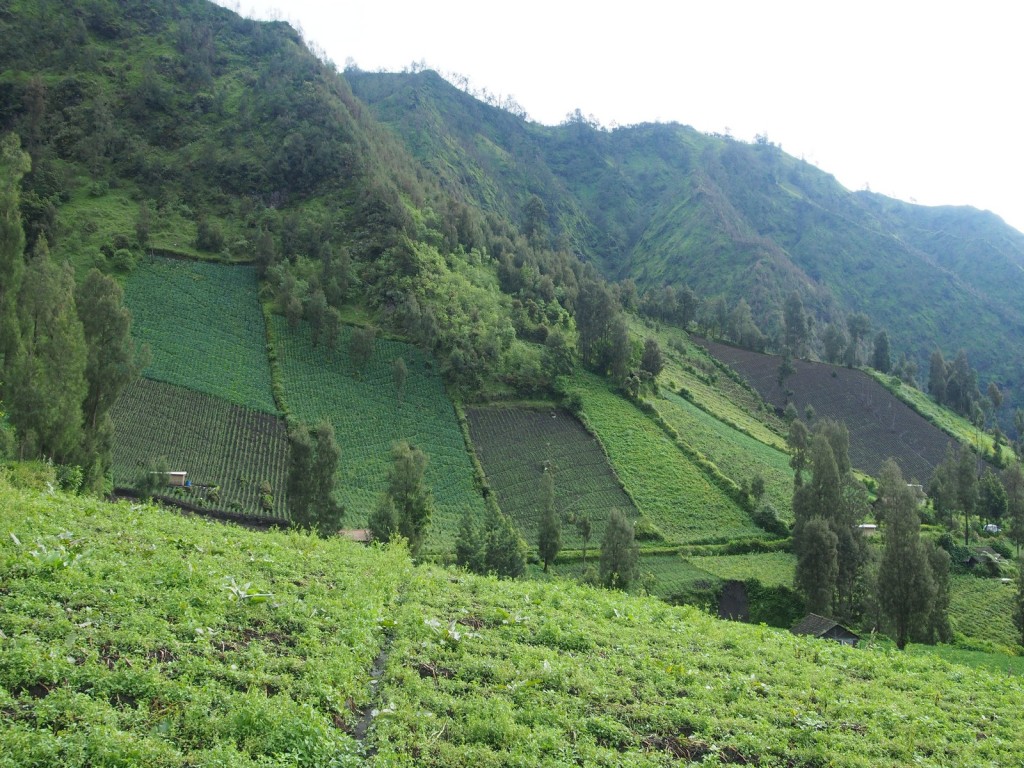
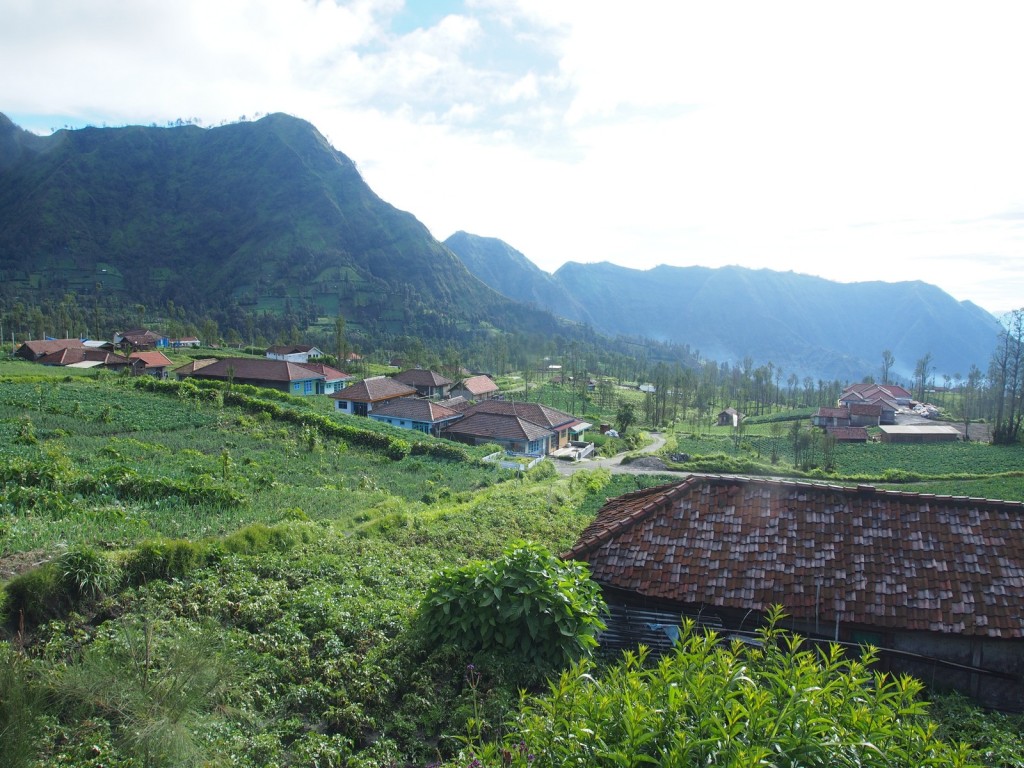

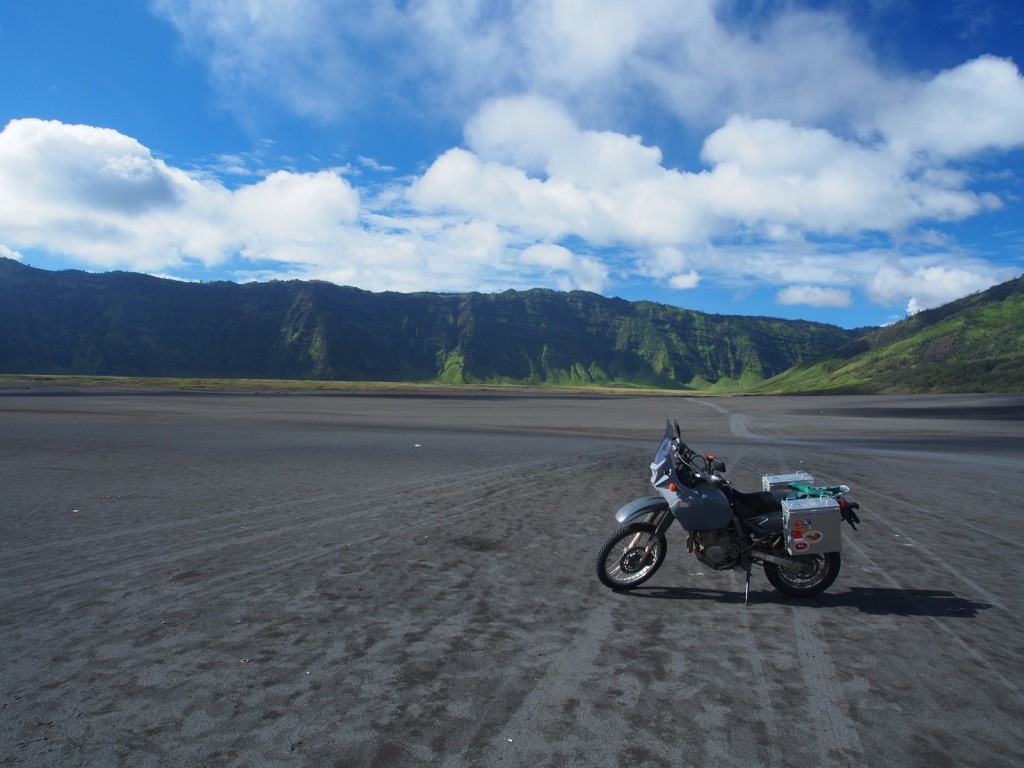
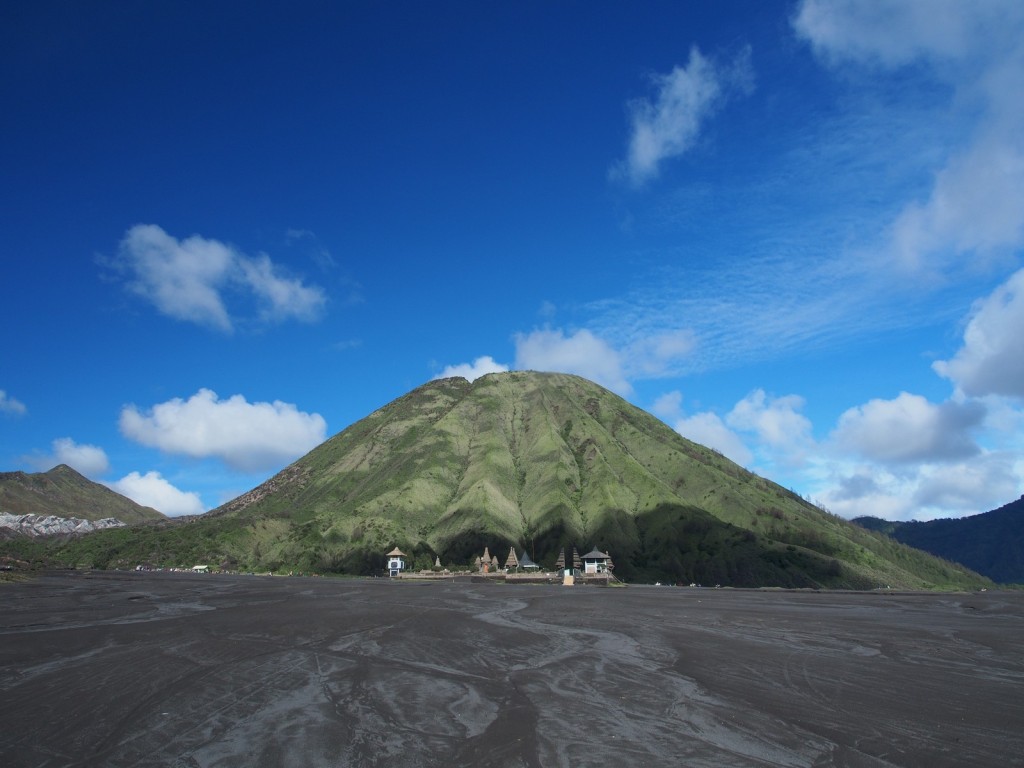
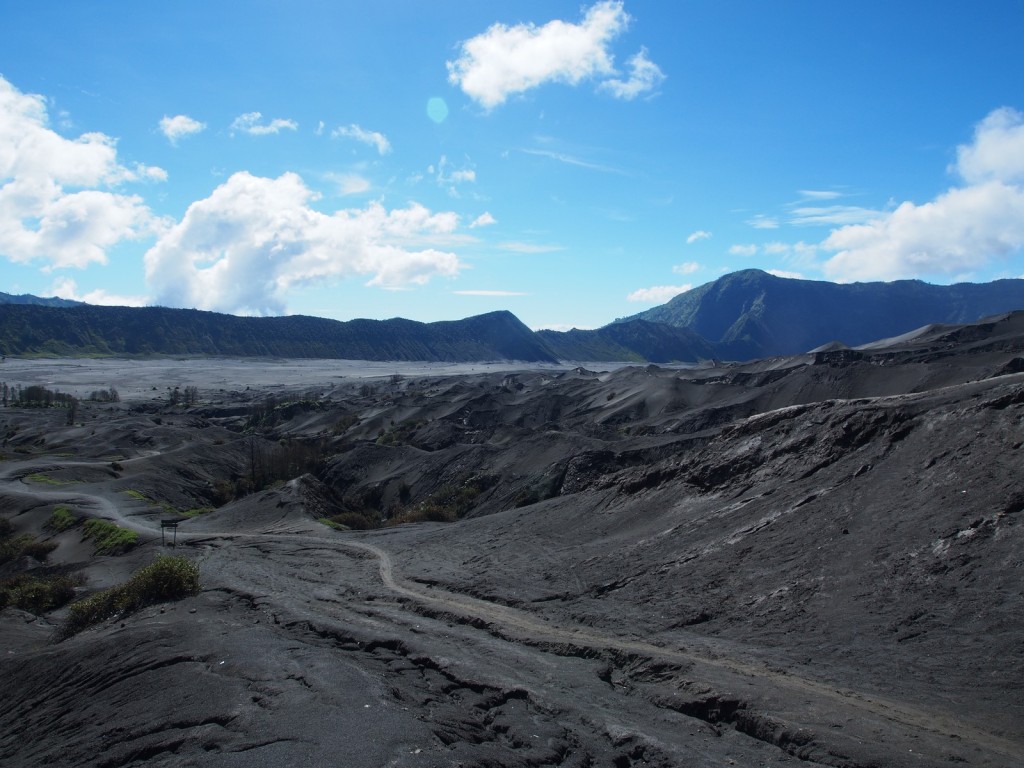
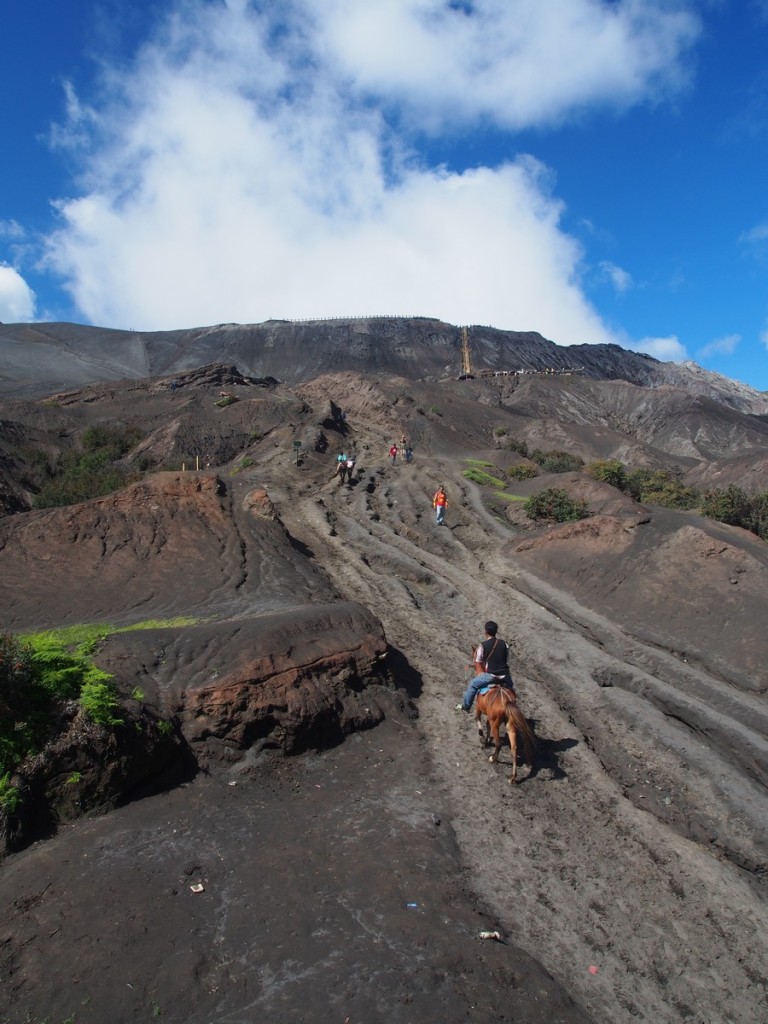
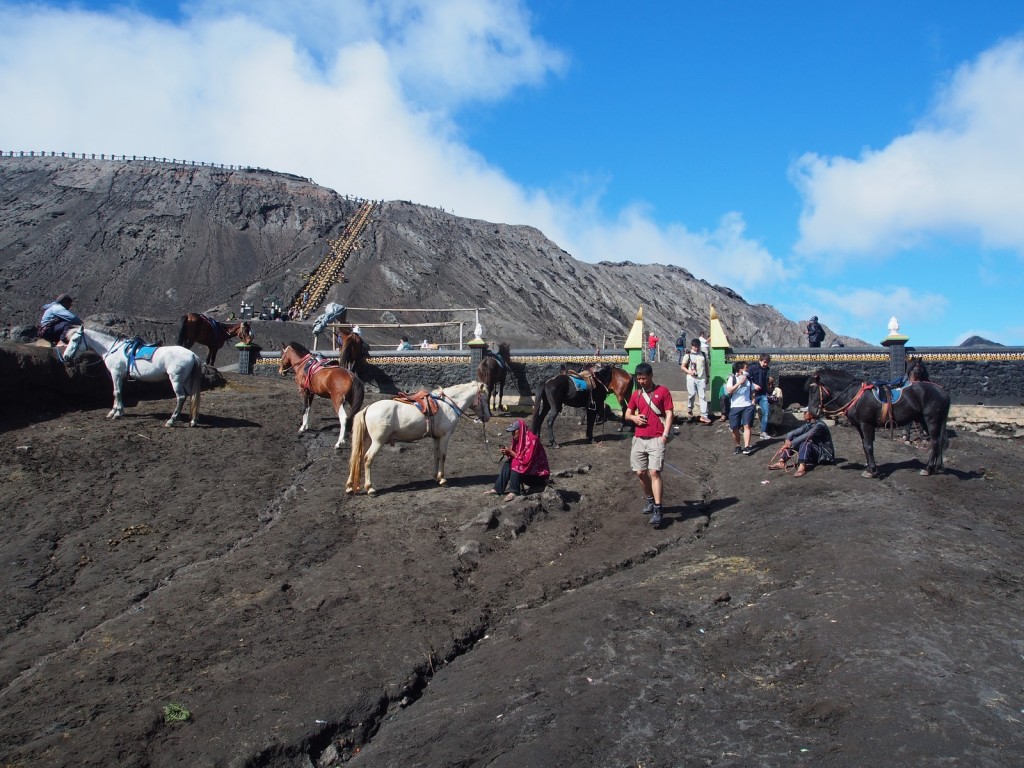

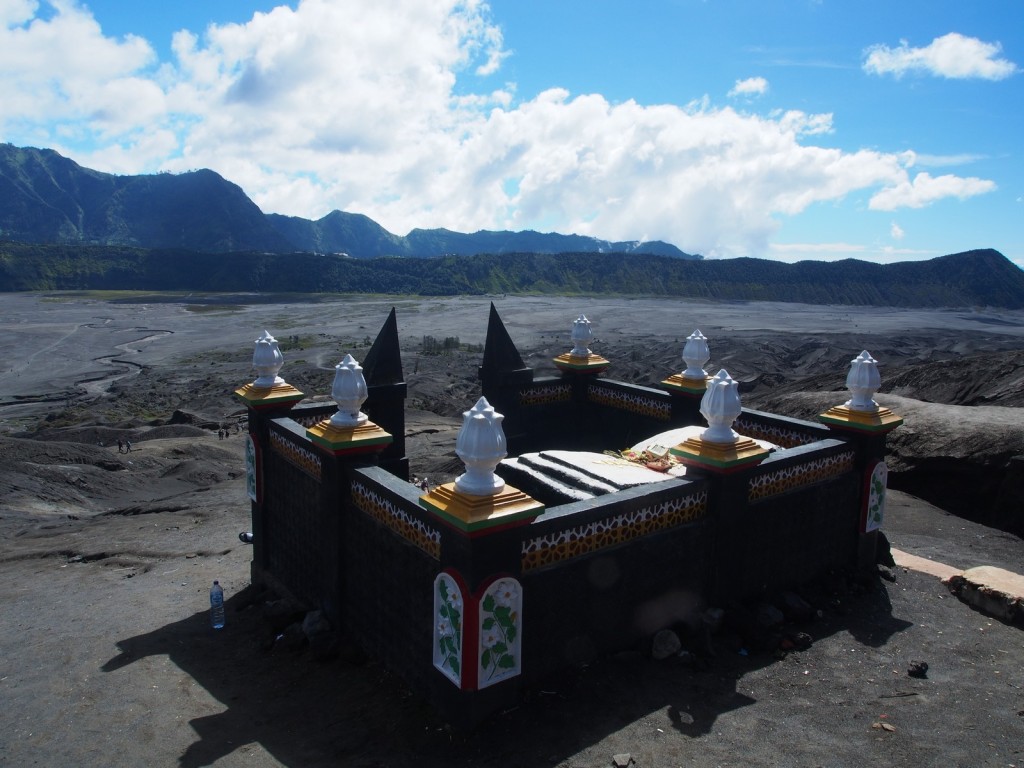
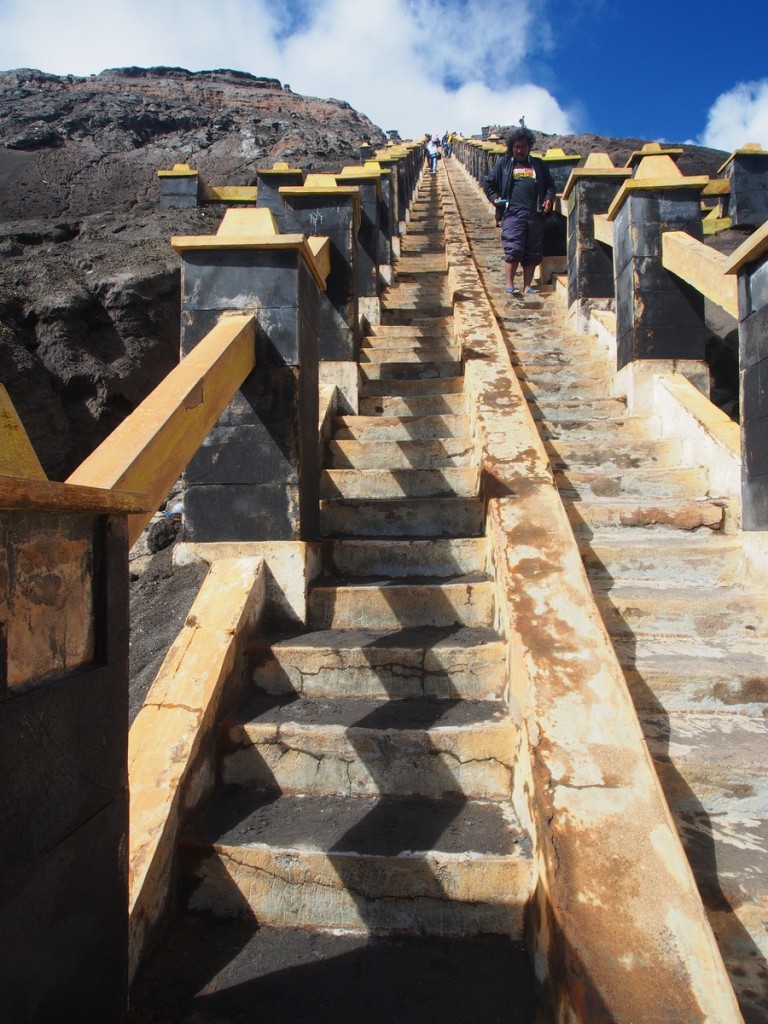
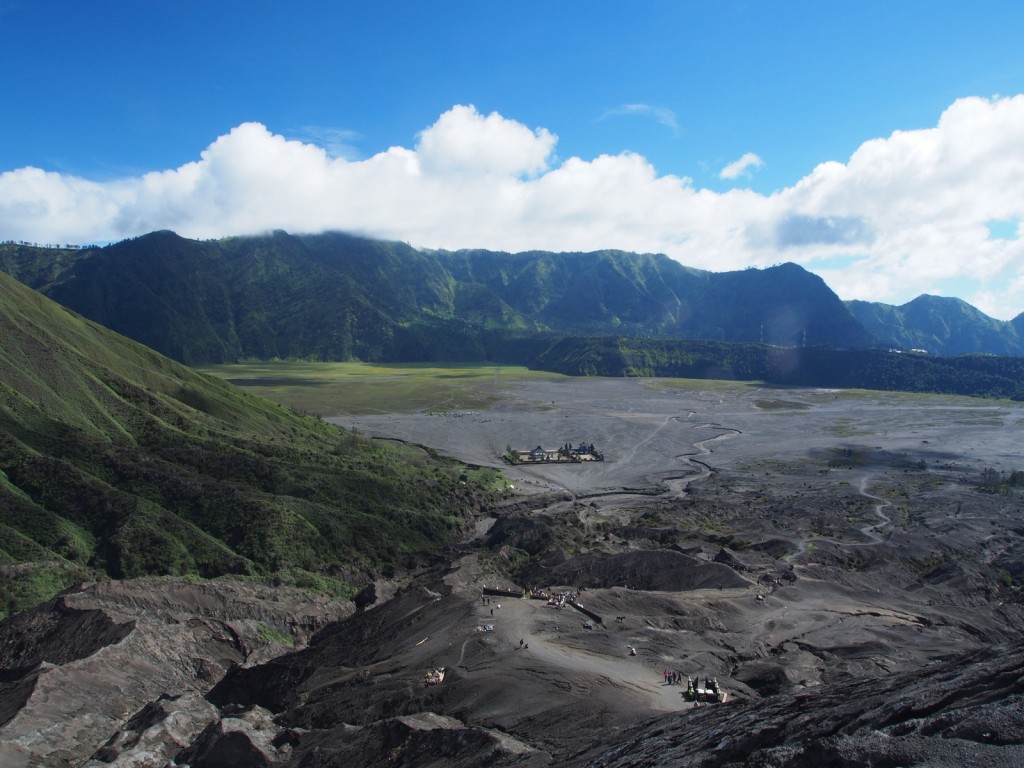
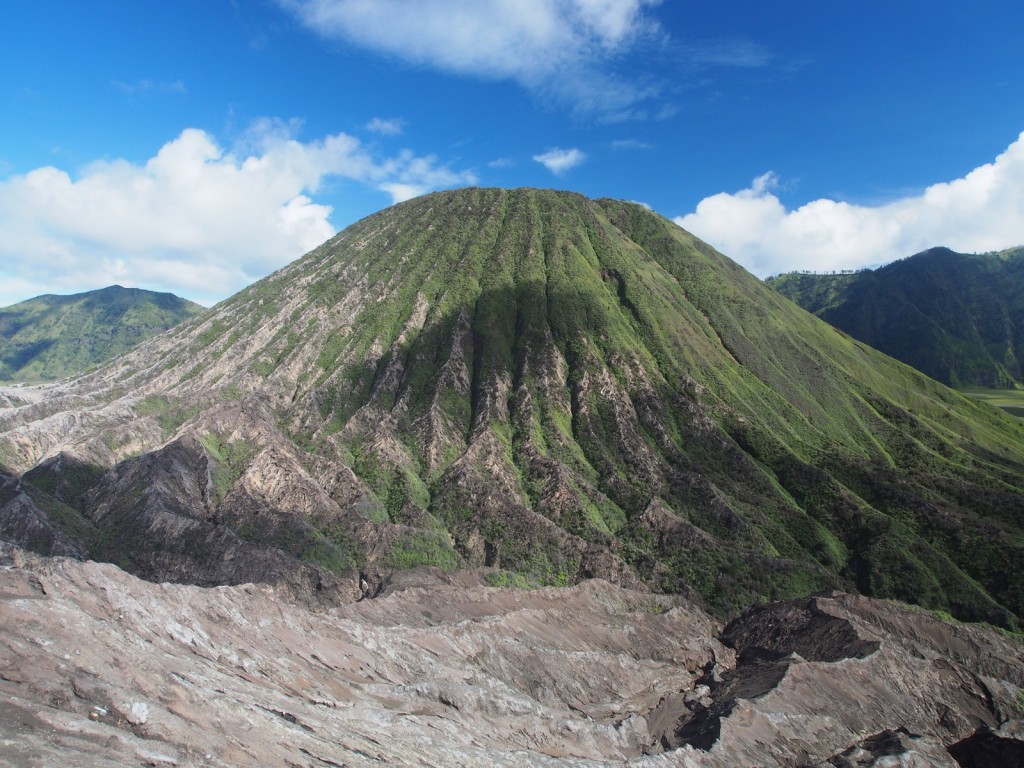
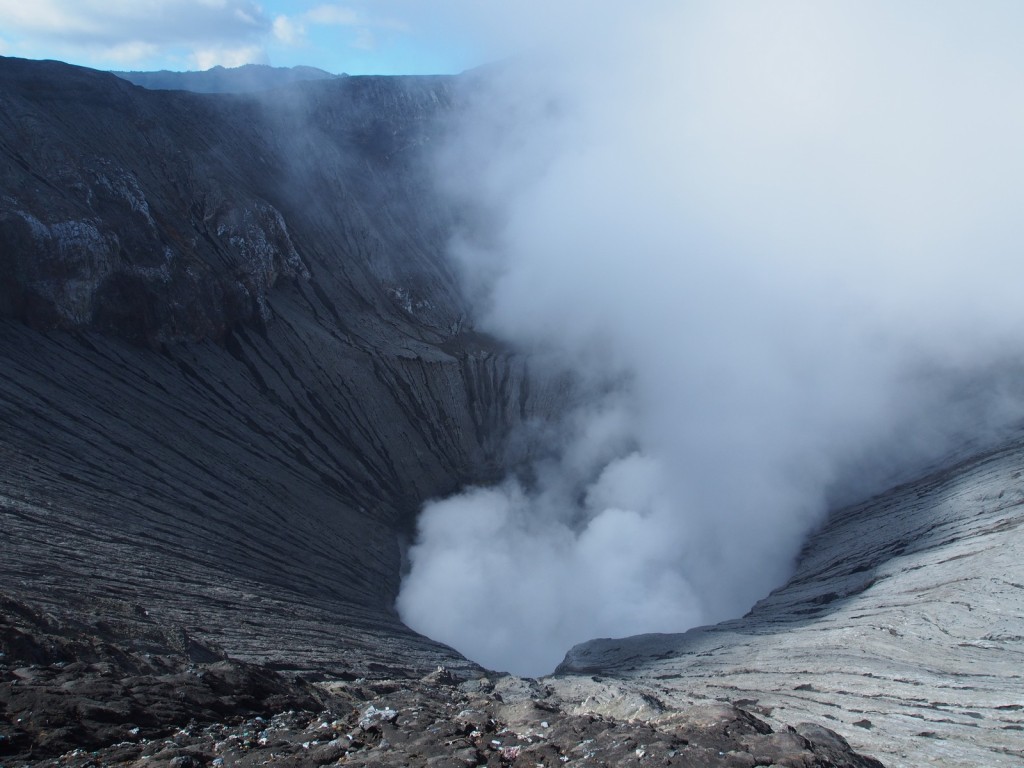
Loving the photos and the story. How are you feeling???
Volcanoes look amazing! Safe travelling. Love.